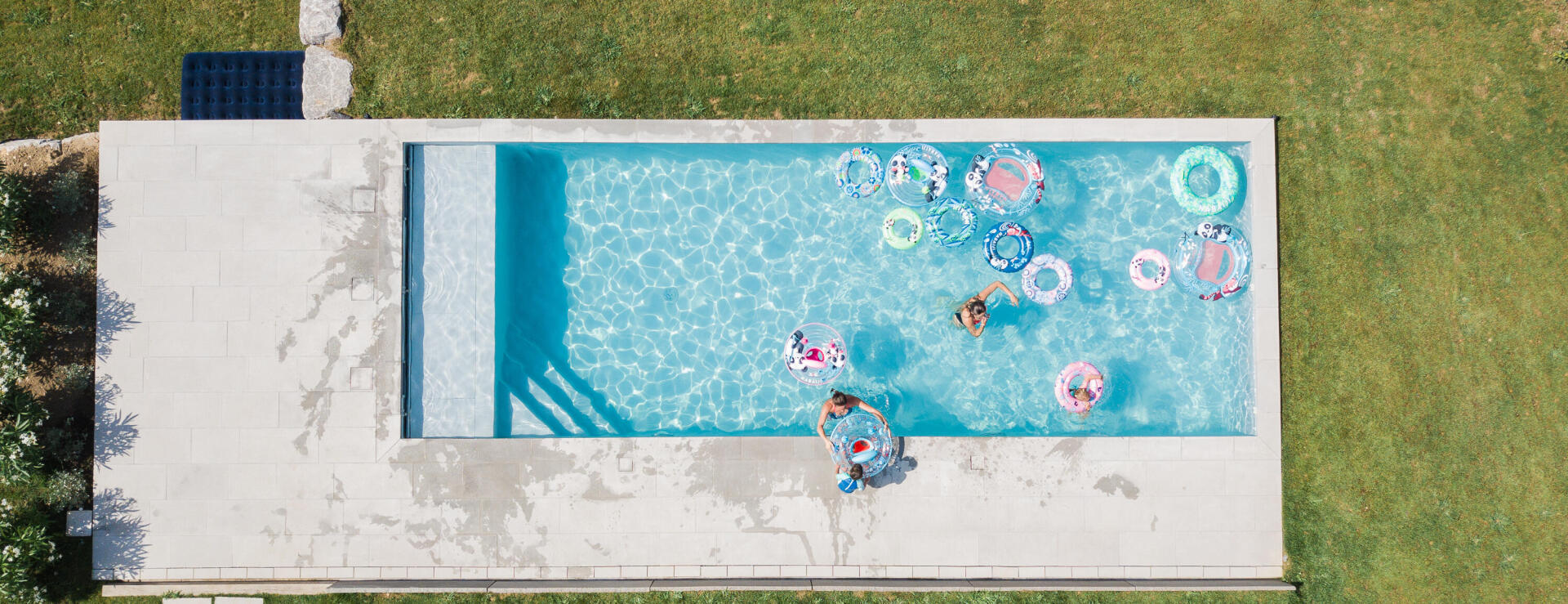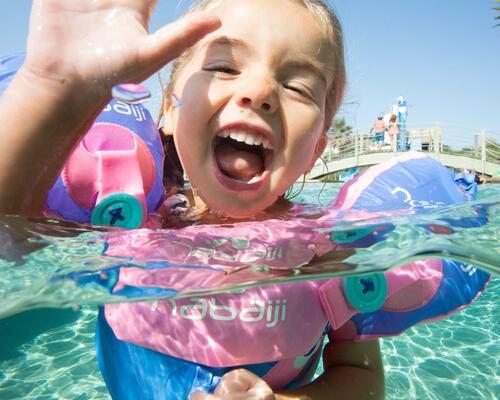3/ At the beach, lake or a private pool: always be vigilant!
Once they have discovered the water, the next step is taking your children to the beach, a lake or the sea, or going on holiday to a place with a swimming pool. You will need to be constantly vigilant and, ideally, with your children in the water. This is also the perfect time to come up with some fun games to help them improve their swimming technique while under your supervision.
If you have a lilo or a giant swim ring to play on in the water, be careful! These are not flotation devices and if your child slips off the object somewhere they cannot touch the bottom, you need to be able to intervene quickly.
Even if your children are playing quietly in the sand on the beach, you still need to watch them. It is not uncommon for little ones to suddenly wander off to look for water without any concept of danger and without an inkling of fear. Once at the water's edge they may not realise they are going too far in and without their buoyancy aids. As a rule of thumb, if the children leave the area of your towels or parasol, be on your guard!
Are you going on holiday to a villa with a swimming pool? Playing in the pool will occupy a good part of your days! But before that, establish some simple rules: no one goes in the water or around the pool on their own. And lock up the pool as soon as you plan to move away from it.







